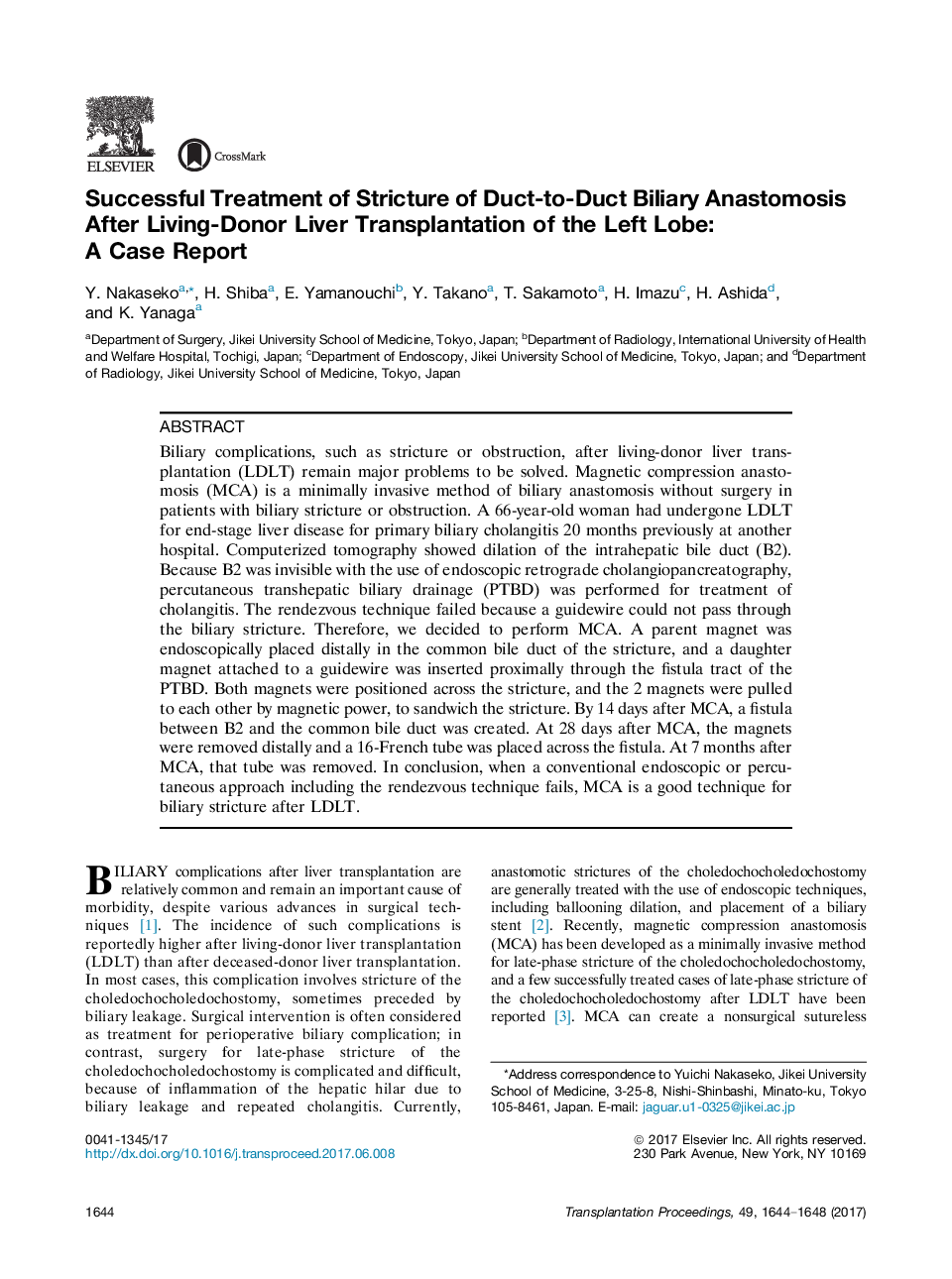| Article ID | Journal | Published Year | Pages | File Type |
|---|---|---|---|---|
| 5728752 | Transplantation Proceedings | 2017 | 5 Pages |
â¢Biliary complications after LDLT are relatively common and remain an important cause of morbidity.â¢MCA is a minimally invasive method of biliary anastomosis without surgery in patients with biliary.â¢When the rendezvous technique fails, MCA is a good technique for biliary stricture after LDLT.â¢This is the 1st report of a successfully treated case by means of MCA after LDLT of the left lobe.
Biliary complications, such as stricture or obstruction, after living-donor liver transplantation (LDLT) remain major problems to be solved. Magnetic compression anastomosis (MCA) is a minimally invasive method of biliary anastomosis without surgery in patients with biliary stricture or obstruction. A 66-year-old woman had undergone LDLT for end-stage liver disease for primary biliary cholangitis 20 months previously at another hospital. Computerized tomography showed dilation of the intrahepatic bile duct (B2). Because B2 was invisible with the use of endoscopic retrograde cholangiopancreatography, percutaneous transhepatic biliary drainage (PTBD) was performed for treatment of cholangitis. The rendezvous technique failed because a guidewire could not pass through the biliary stricture. Therefore, we decided to perform MCA. A parent magnet was endoscopically placed distally in the common bile duct of the stricture, and a daughter magnet attached to a guidewire was inserted proximally through the fistula tract of the PTBD. Both magnets were positioned across the stricture, and the 2 magnets were pulled to each other by magnetic power, to sandwich the stricture. By 14 days after MCA, a fistula between B2 and the common bile duct was created. At 28 days after MCA, the magnets were removed distally and a 16-French tube was placed across the fistula. At 7 months after MCA, that tube was removed. In conclusion, when a conventional endoscopic or percutaneous approach including the rendezvous technique fails, MCA is a good technique for biliary stricture after LDLT.
